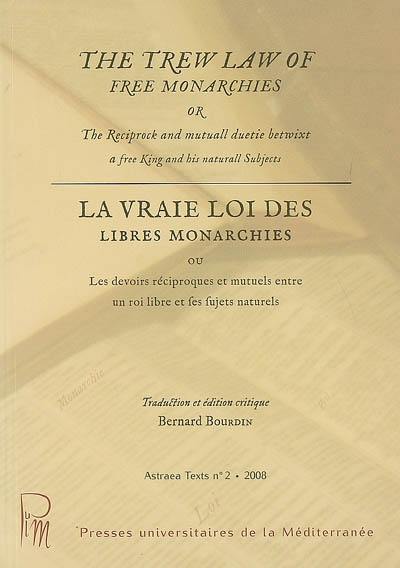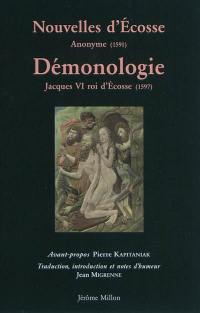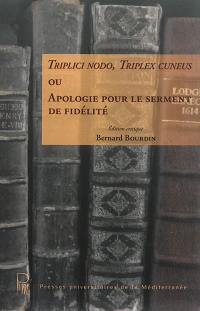
Fiche technique
Format : Broché
Nb de pages : 123 pages
Poids : 300 g
Dimensions : 15cm X 21cm
ISBN : 978-2-84269-839-3
EAN : 9782842698393
The trew law of free monarchies or The reciprock and mutuall duetie betwixt a free king and his naturall subjects
Quatrième de couverture
Lorsque Jacques VI d'Écosse publie The Trew Law of Free Monarchies en 1598, il répond à deux soucis majeurs : conforter la souveraineté de sa couronne par la justification du droit divin des rois contre le cléricalisme des presbytériens-puritains, dont la doctrine du double régime appelle le contrôle de la monarchie par les pasteurs ; et préparer la succession de la reine Élisabeth en vertu du caractère héréditaire du droit divin des rois.
Originalité de sa pensée, ce droit « venant d'en haut » s'applique à la fonction royale ; ses successeurs bénéficient de la dévolution héréditaire de la couronne. Les théoriciens catholiques ne peuvent recourir au principe de catholicité pour tenter d'installer sur le trône une princesse catholique.
Ainsi, droit divin et légitimisme héréditaire sont les deux normes théologico-politiques de la monarchie Stuart qui donneront forme à l'absolutisme anglais jusqu'à sa chute lors de la Glorieuse Révolution de 1688.
James VI of Scotland was pursuing two goals when he published The Trew Law of Free Monarchies in 1598 : consolidate the crown's sovereignty by justifying the divine right of kings in the face of presbytarian-puritan clericalism, whose doctrine of the two kingdoms advocated the control of the monarchy by church ministers ; and prepare the succession of Queen Elizabeth, in accordance with the hereditary nature of the sovereign's divine right.
Therein lies the originality of his thought : since divine right « comes from above », it applies to the royal function ; this ensures his successors'right to the hereditary devolution of the crown. Catholic theoreticians cannot invoke the principle of catholicity to try and install a catholic princess on the throne.
Thus, divine right and hereditary legitimacy are the two theological-political norms of the Stuart monarchy, which will shape English absolutism until its fall during the Glorious Revolution of 1688.








